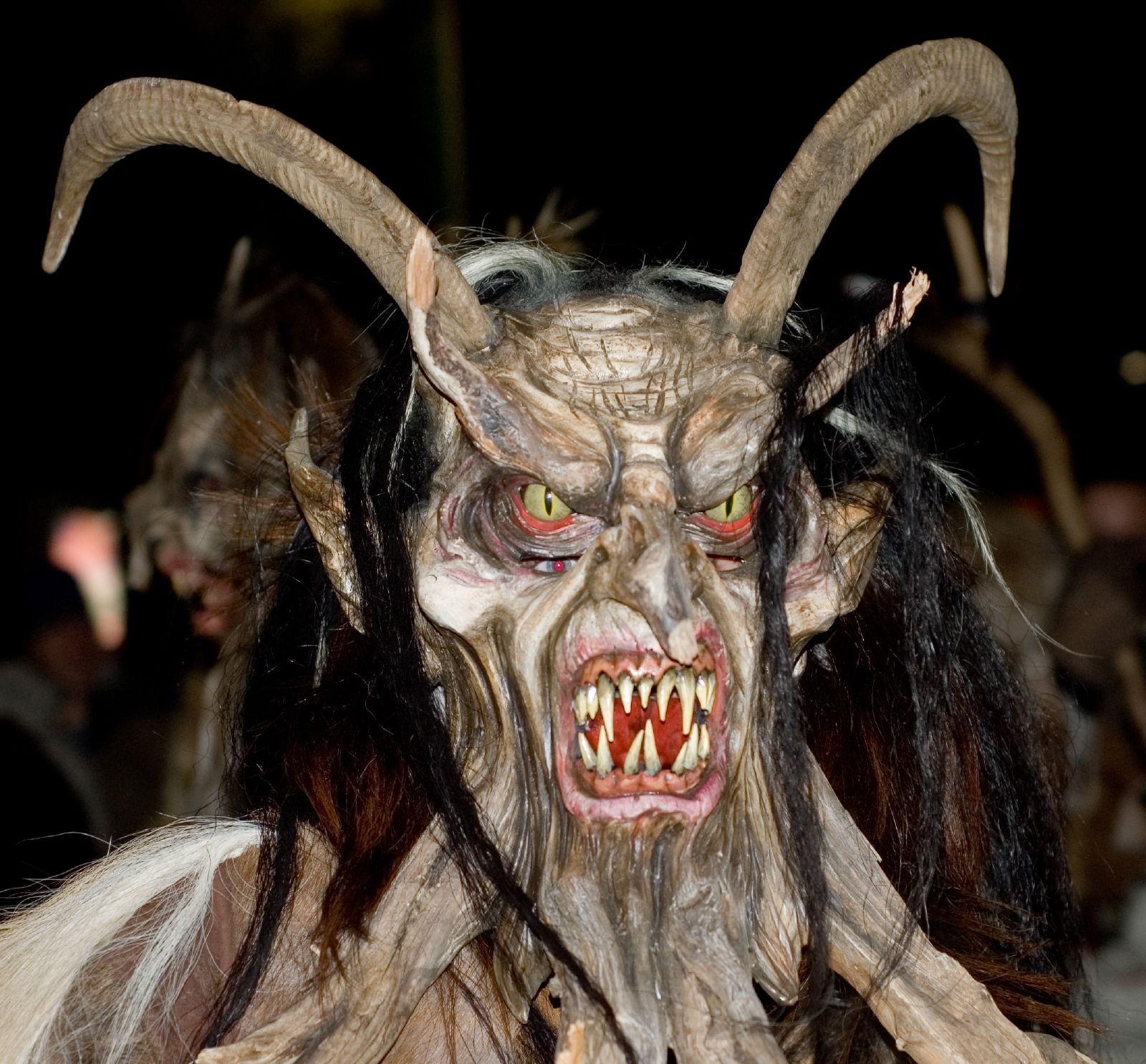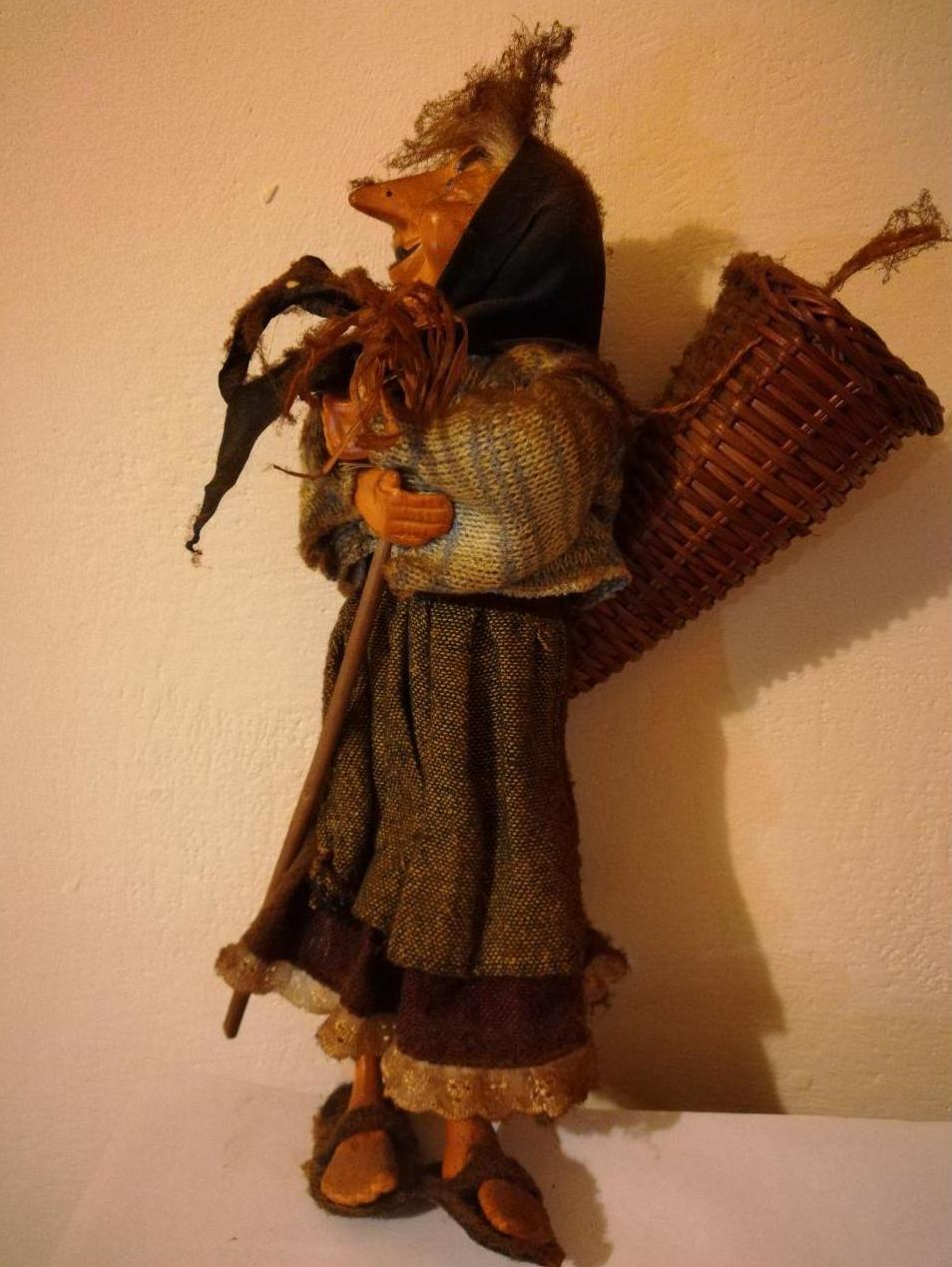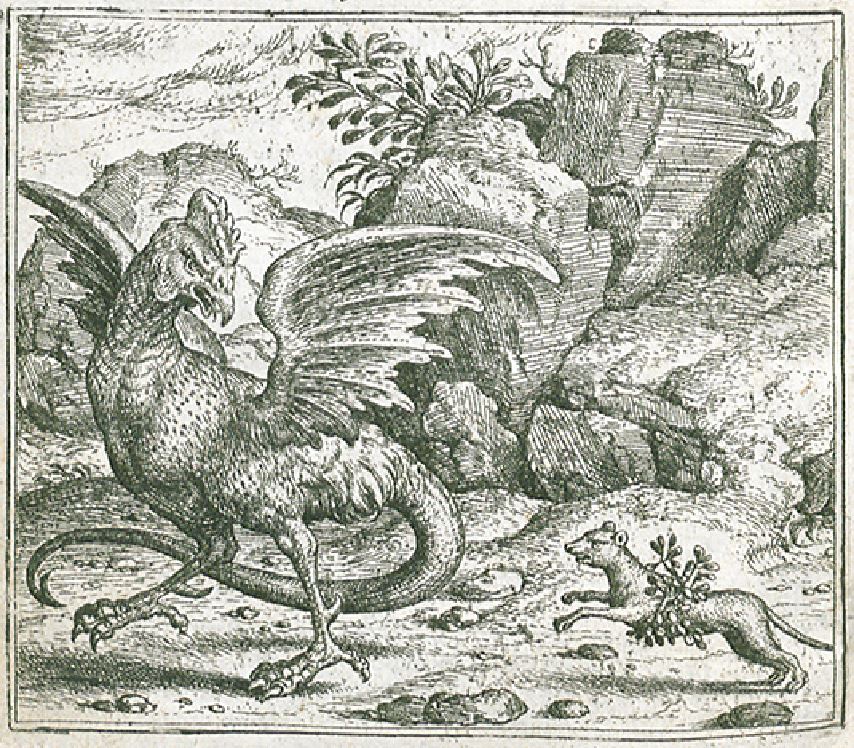|
Badalisc
__NOTOC__ The Badalisc (also Badalisk) is a mythical creature of the Val Camonica, Italy, in the southern central Alps. The Badalisc is represented today as a creature with a big head covered with a goat skin, two small horns, a huge mouth and glowing eyes. The celebration According to legend the Badalisc lives in the woods around the village of Andrista (commune of Cevo) and is supposed to annoy the community: each year it is captured during the period of Epiphany (5 & 6 January) and led on a rope into the village by musicians and masked characters, including ''il giovane'' (the young man), ''il vecchio'' (the old man), ''la vecchia'' (the old woman) and the young ''signorina'', who is "bait" for the animal's lust. There are also some old witches, who beat drums, and bearded shepherds, and a hunchback (''un torvo gobetto'') who has a "rustic duel" with the animal. Traditionally only men take part, although some are dressed as women. In medieval times women were prohibited from ... [...More Info...] [...Related Items...] OR: [Wikipedia] [Google] [Baidu] |
Pre-Christian Alpine Traditions
The central and eastern Alps of Europe are rich in folklore traditions dating back to pre-Christian times, with surviving elements originating from Germanic, Gaulish (Gallo-Roman), Slavic ( Carantanian) and Raetian culture. Survival through the ages Ancient customs survived in the rural parts of Austria, Switzerland, Bavaria, Slovenia, western and northern Croatia and north eastern Italy in the form of dance, art, processions, rituals and games. The high regional diversity results from the mutual isolation of Alpine communities. In the Alps, the relationship between the Roman Catholic Church and paganism has been an ambivalent one. While some customs survived only in the remote valleys inaccessible to the church's influence, other customs were actively assimilated over the centuries. In light of the dwindling rural population of the Alps, many customs have evolved into more modern interpretations. Pastoral traditions Around September 8, the feast of the Nativity of Mary, i ... [...More Info...] [...Related Items...] OR: [Wikipedia] [Google] [Baidu] |
Italian Folklore
Folklore of Italy refers to the folklore and urban legends of Italy. Within the Italian territory, various peoples have followed one another over time, each of which has left its mark on current culture. Some tales also come from Christianization, especially those concerning demons, which are sometimes recognized by Christian demonology. Folklore also includes folk music, folk dance and folk heroes. Figures and legends of Italian folklore Below is a list of the folklore figures who have animated Italian folk tales since ancient Rome. Traditional characters * In Italian folklore, the '' Befana'' is an old woman who delivers gifts to children throughout Italy on Epiphany Eve (the night of January 5) in a similar way to Santa Claus or the Three Magi Kings. A popular belief is that her name derives from the Feast of Epiphany ( it, Festa dell'Epifania). * ''Santa Lucia'' is a holy woman who delivers gifts to children of Bergamo and province on 13 December, again like Santa Cl ... [...More Info...] [...Related Items...] OR: [Wikipedia] [Google] [Baidu] |
Maschera Del Badalisc - Andrista - Cevo (Foto Luca Giarelli) '', an 1859 opera by Giuseppe Verdi
{{dab, surname ...
Maschera (Italian: mask) may refer to: *Maschera (band), a Japanese band *Maschera, a genre of music introduced from Italy to Germany by William Brade *'' La maschera'', a film by Fiorella Infascelli (1988) *Fiorenzo Maschera (1540-1584), Italian composer See also * ''Un ballo in maschera ''Un ballo in maschera'' ''(A Masked Ball)'' is an 1859 opera in three acts by Giuseppe Verdi. The text, by Antonio Somma, was based on Eugène Scribe's libretto for Daniel Auber's 1833 five act opera, '' Gustave III, ou Le bal masqué''. The ... [...More Info...] [...Related Items...] OR: [Wikipedia] [Google] [Baidu] |
Salami
Salami ( ) is a cured sausage consisting of fermented and air-dried meat, typically pork. Historically, salami was popular among Southern, Eastern, and Central European peasants because it can be stored at room temperature for up to 45 days once cut, supplementing a potentially meager or inconsistent supply of fresh meat. Countries and regions across Europe make their own traditional varieties of salami. Etymology The word 'salami' in English comes from the plural form of the Italian (). It is a singular or plural word in English for cured meats of a European (particularly Italian) style. In Romanian, Bulgarian, and Turkish, the word is ''salam''; in Hungarian, it is ''szalámi''; in Czech it is ''salám''; in Slovak, it is ''saláma'' while Polish, French, German, Greek and Dutch have the same word as English. The name may be derived from the Latin word ''salumen''. The word originates from the word ''sale'' ("salt") with a termination (''-ame'') that in Italian ind ... [...More Info...] [...Related Items...] OR: [Wikipedia] [Google] [Baidu] |
Mythic Humanoids
Mythic humanoids are mythological creatures that are part human, or that resemble humans through appearance or character. Each culture has different mythical creatures that come from many different origins. A major chunk of these creatures are humanoids. They are often able to talk and in many stories they guide the hero on their journey. They are said to come before the creation of gods and goddesses. Categories of mythic humanoids The multitude of mythic humanoids can be divided into four categories. Human skinned humanoids These humanoids can pass unnoticed in human society if their attributes are small enough to go unnoticed. Their ears may be slightly misshaped, their eyes may not line up, or their height may not measure up, but their difference in appearance can be attributed to genetic mistakes or mutation. Sometimes they live separated from society, live in alternative realities, or appear at night or under specific circumstances. This category includes witches, elves, fa ... [...More Info...] [...Related Items...] OR: [Wikipedia] [Google] [Baidu] |
Christmas In Italy
Christmas in Italy (in Italian: ''Natale'') begins on December 8, with the feast of the Immaculate Conception, the day on which traditionally the Christmas tree is mounted and ends on January 6, of the following year with the Epiphany (in Italian: ''Epifania''). The term "Natale" derives from the Latin ''natalis'', which literally means "birth", and the Greetings formulas in Italian are (Merry Christmas) and ( Happy Christmas). Popular traditions Nativity scene The tradition of the nativity scene comes from Italy. What is considered the first nativity scene in history (a living nativity scene) was set up by St. Francis Of Assisi in Greccio in 1223. However, nativity scenes were already found in Naples in 1025. In Italy, regional crib traditions then spread, such as that of the Bolognese crib, the Genoese crib and the Neapolitan crib. Yule log The tradition of the Yule log, once widespread, has been attested in Italy since the 11th century. A detailed description of t ... [...More Info...] [...Related Items...] OR: [Wikipedia] [Google] [Baidu] |
Christmas Characters
Christmas is an annual festival commemorating the birth of Jesus Christ, observed primarily on December 25 as a religious and cultural celebration among billions of people around the world. A feast central to the Christian liturgical year, it is preceded by the season of Advent or the Nativity Fast and initiates the season of Christmastide, which historically in the West lasts twelve days and culminates on Twelfth Night. Christmas Day is a public holiday in many countries, is celebrated religiously by a majority of Christians, as well as culturally by many non-Christians, and forms an integral part of the holiday season organized around it. The traditional Christmas narrative recounted in the New Testament, known as the Nativity of Jesus, says that Jesus was born in Bethlehem, in accordance with messianic prophecies. When Joseph and Mary arrived in the city, the inn had no room and so they were offered a stable where the Christ Child was soon born, with angels proclai ... [...More Info...] [...Related Items...] OR: [Wikipedia] [Google] [Baidu] |
Italian Legendary Creatures
Italian(s) may refer to: * Anything of, from, or related to the people of Italy over the centuries ** Italians, an ethnic group or simply a citizen of the Italian Republic or Italian Kingdom ** Italian language, a Romance language *** Regional Italian, regional variants of the Italian language ** Languages of Italy, languages and dialects spoken in Italy ** Italian culture, cultural features of Italy ** Italian cuisine, traditional foods ** Folklore of Italy, the folklore and urban legends of Italy ** Mythology of Italy, traditional religion and beliefs Other uses * Italian dressing, a vinaigrette-type salad dressing or marinade * Italian or Italian-A, alternative names for the Ping-Pong virus, an extinct computer virus See also * * * Italia (other) * Italic (other) * Italo (other) * The Italian (other) * Italian people (other) Italian people may refer to: * in terms of ethnicity: all ethnic Italians, in and outside of Italy * in t ... [...More Info...] [...Related Items...] OR: [Wikipedia] [Google] [Baidu] |
Krampus
Krampus is a horned, anthropomorphic figure in the Central and Eastern Alpine folklore of Europe who, during the Advent season, scares children who have misbehaved. Assisting Saint Nicholas, or Santa Claus, the pair visit children on the night of 6 December, with Saint Nicholas rewarding the well-behaved children with modest gifts such as oranges, dried fruit, walnuts and chocolate, while the badly behaved ones only receive punishment from Krampus with birch rods. Krampus day itself, on the other hand, is on the 5th of December. The origin of the figure is unclear; some folklorists and anthropologists have postulated it as having pre-Christian origins. In traditional parades and in such events as the (English: ''Krampus run''), young men dressed as Krampus attempt to scare the audience with their antics. Such events occur annually in most Alpine towns. Krampus is featured on holiday greeting cards called . The figure has been imported into American popular culture, and ... [...More Info...] [...Related Items...] OR: [Wikipedia] [Google] [Baidu] |
Perchta
or (English: Bertha), also commonly known as and other variations, was once known as a goddess in Alpine paganism in the Upper German and Austrian regions of the Alps. Her name may mean "the bright one" ( goh, beraht, bereht, from Proto-Germanic *''berhtaz'') and is probably related to the name , meaning the feast of the Epiphany. Eugen Mogk provides an alternative etymology, attributing the origin of the name to the Old High German verb , meaning "hidden" or "covered". Perchta is often identified as stemming from the same Germanic goddess as Holda and other female figures of German folklore (see Frija-Frigg). According to Jacob Grimm and Lotte Motz, Perchta is Holda's southern cousin or equivalent, as they both share the role of "guardian of the beasts" and appear during the Twelve Days of Christmas, when they oversee spinning.Motz according to Hilton 1984. Grimm says Perchta or Berchta was known "precisely in those Upper German regions where Holda leaves off, in Swab ... [...More Info...] [...Related Items...] OR: [Wikipedia] [Google] [Baidu] |
Basilisk
In European bestiaries and legends, a basilisk ( or ) is a legendary reptile reputed to be a serpent king, who causes death to those who look into its eyes. According to the ''Naturalis Historia'' of Pliny the Elder, the basilisk of Cyrene is a small snake, "being not more than twelve inches in length", that is so venomous, it leaves a wide trail of deadly venom in its wake, and its gaze is likewise lethal. The basilisk's weakness is the odor of the weasel, which, according to Pliny, was thrown into the basilisk's hole, recognizable because some of the surrounding shrubs and grass had been scorched by its presence. It is possible that the legend of the basilisk and its association with the weasel in Europe was inspired by accounts of certain species of Asiatic snakes (such as the king cobra) and their natural predator, the mongoose. Etymology The word originates from the Greek form ''basilískos'' ( el, βασιλίσκος; la, basiliscus), which means "little king", "li ... [...More Info...] [...Related Items...] OR: [Wikipedia] [Google] [Baidu] |
.jpg)




.jpg)


